A Journey Through Time: Exploring the Lost City of Petra
Lost City of Petra
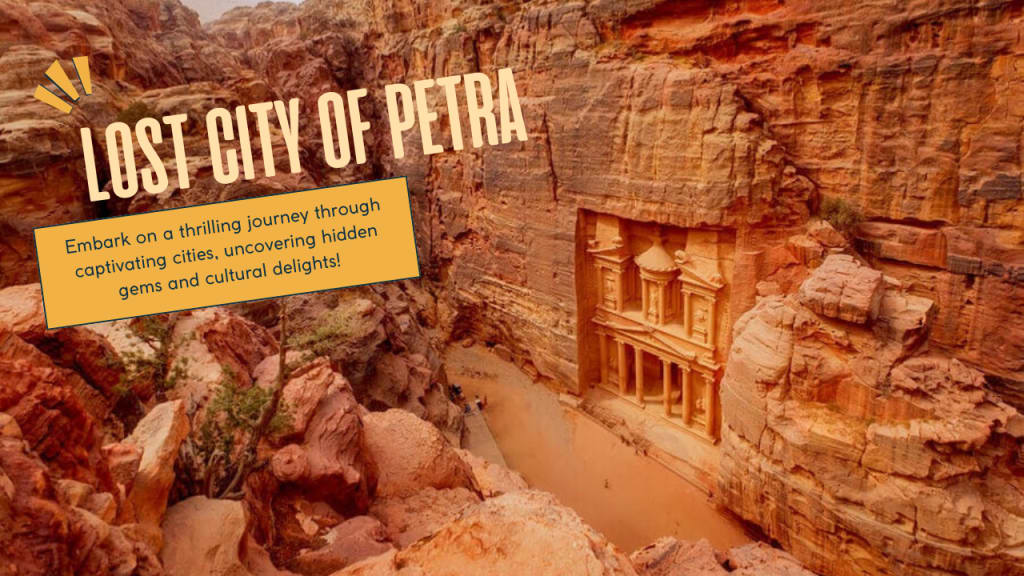
Located deep within the rugged mountains and sweeping deserts of southern Jordan lies a marvel of ancient engineering and artistic prowess—the lost city of Petra. Also known as the "Rose City" for its stunning pink sandstone cliffs, Petra is a UNESCO World Heritage Site and one of the New Seven Wonders of the World. With a history of over 2,000 years, Petra continues to captivate the imaginations of travelers, historians, and adventurers from around the globe. Join the journey through this ancient city, where history, culture, and natural beauty intertwine in a breathtaking display.
A Glimpse into Petra's Past
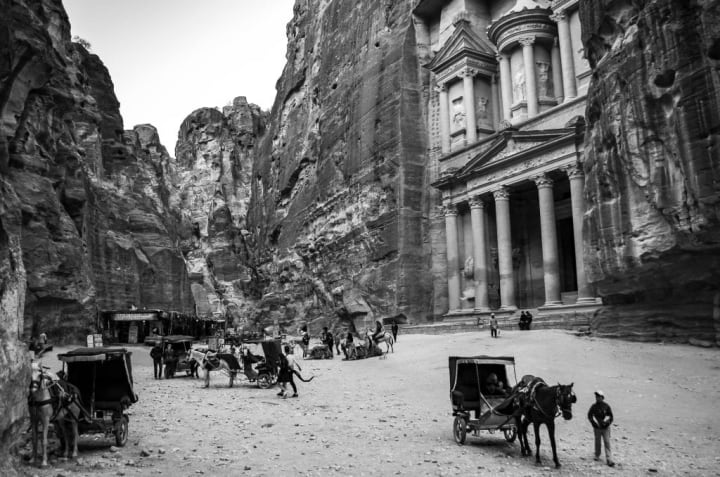
Petra's story begins with the Nabataeans, a nomadic Arab tribe who settled in the region around the 4th century BCE. Leveraging their strategic location along the trade routes between Arabia, Egypt, and the Mediterranean, the Nabataeans grew wealthy and powerful. They carved their city into the very cliffs of the mountains, creating an intricate network of temples, tombs, and dwellings.
The city thrived as a major trading hub, facilitating the exchange of spices, silk, and other luxury goods. However, Petra's fortunes declined with the rise of new trade routes and the devastating earthquakes of the 4th century CE. By the time the city was rediscovered by Swiss explorer Johann Ludwig Burckhardt in 1812, it had long been abandoned and forgotten by the outside world.
The Siq: A Dramatic Entrance
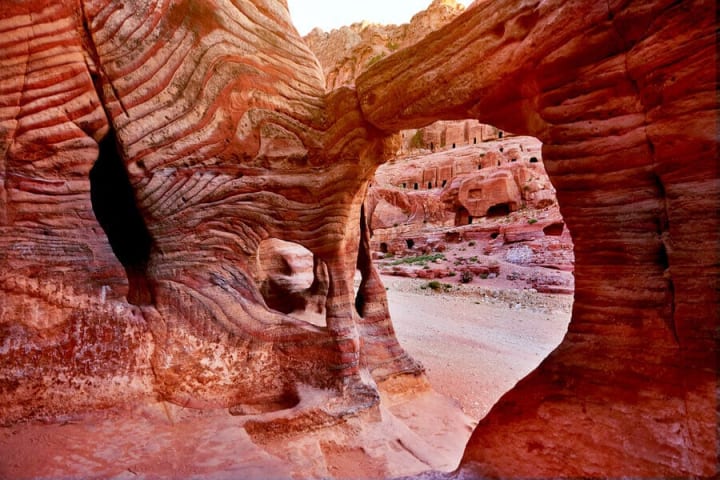
The journey to Petra begins with a walk through the Siq, a narrow, winding gorge that stretches for about a mile. As you make your way through the Siq, the towering cliffs—rising up to 80 meters high—create an atmosphere of anticipation and mystery. The Siq is not only a natural wonder but also an engineering marvel; the Nabataeans constructed a sophisticated water conduit system along its walls to channel water into the city.
The Siq culminates in a breathtaking reveal: the first glimpse of Al-Khazneh, or the Treasury. This iconic structure, with its elaborate facade carved directly into the rose-red rock, is one of the most photographed monuments in Petra. Originally a royal tomb, the Treasury's true purpose remains a subject of debate among historians.
The Wonders Within Petra
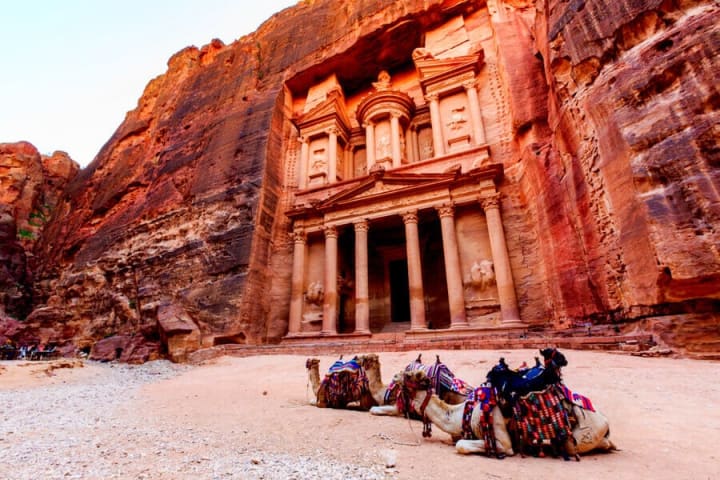
Beyond the Treasury, Petra unfolds into a vast archaeological site filled with wonders. Here are some of the must-see highlights:
1. The Street of Facades:
Lined with tombs and houses, the Street of Facades showcases the architectural diversity and skill of the Nabataeans. The facades are intricately carved, reflecting influences from Greek, Roman, and Egyptian styles.
2. The Theatre:
Carved into the hillside, Petra's theatre could accommodate up to 8,500 spectators. Its design reflects the blending of Nabataean and Roman architectural elements, indicative of Petra's cultural interactions.
3. The Monastery (Ad-Deir):
Climbing up 800 rock-cut steps leads to the Monastery, one of Petra's largest and most awe-inspiring monuments. Similar in design to the Treasury but much larger, the Monastery offers stunning views of the surrounding landscapes.
4. The Royal Tombs:
A Cluster of large tombs, including the Urn Tomb, Silk Tomb, and Corinthian Tomb, showcases the grandeur and artistry of Nabataean funerary architecture. Each tomb has unique features and decorative elements, making them a fascinating study in ancient craftsmanship.
5. The Colonnaded Street:
Once the bustling heart of Petra, the Colonnaded Street was lined with shops, temples, and public buildings. Walking along this ancient thoroughfare offers a glimpse into the daily life of Petra's inhabitants.
Experiencing Petra Today
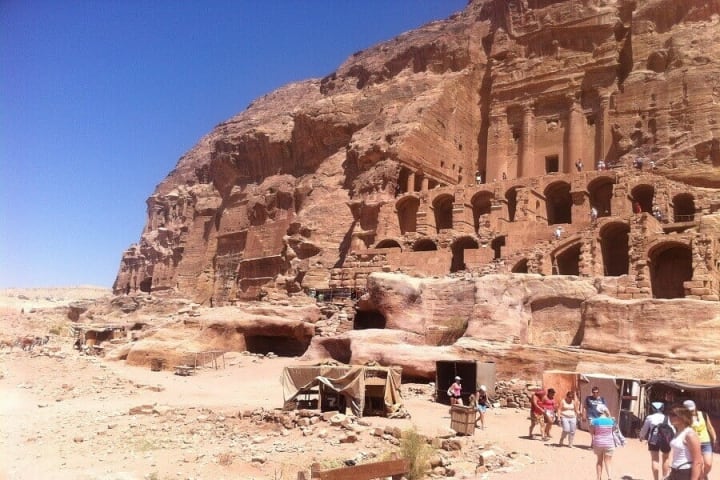
Petra is more than just a tour of ancient ruins; it's an immersive experience that transports you back in time. To make the most of your visit, consider these tips:
Go Early: Arriving early not only helps you beat the crowds but also allows you to experience the soft morning light illuminating the rose-red cliffs.
Stay Late: Petra at Night is a magical experience where the Siq and Treasury are lit by thousands of candles, accompanied by traditional Bedouin music.
Hire a Guide: A knowledgeable guide can provide invaluable insights into Petra's history, architecture, and the stories behind its many monuments.
Explore Beyond the Main Trail: Petra is vast, and some of its most beautiful and serene spots lie off the beaten path. Take the time to explore side trails and lesser-known sites.
Conclusion
Petra is not just an archaeological site; it's a testament to human ingenuity, resilience, and the desire to create beauty in harmony with nature. Whether you're a history buff, an adventurer, or simply a traveler seeking inspiration, Petra offers an unforgettable journey into the heart of an ancient civilization. pack your bags, lace up your hiking boots, and get ready to explore the lost city of Petra—a place where history comes alive and the spirit of the Nabataeans endures in every carved stone and sweeping vista.
About the Creator
Enjoyed the story? Support the Creator.
Subscribe for free to receive all their stories in your feed. You could also pledge your support or give them a one-off tip, letting them know you appreciate their work.





Comments
There are no comments for this story
Be the first to respond and start the conversation.